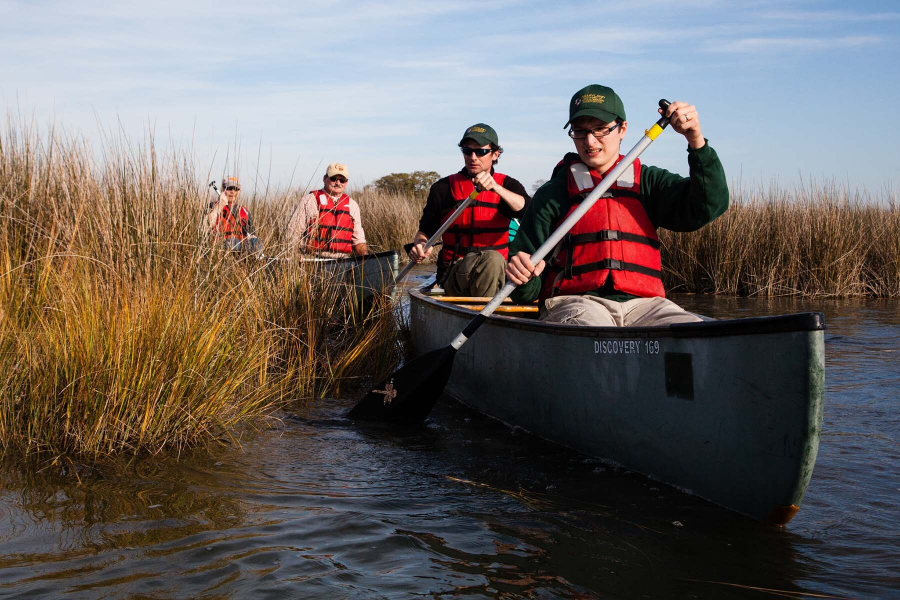Study suggests salt marshes could persist despite rising sea levels
VIMS report predicts salt marshes more resilient than previously thought

Salt marshes may be more resilient to the effects of rising sea levels than previously thought, according to a recent study from the Virginia Institute of Marine Science (VIMS).
Climate change is expected to bring a multitude of changes to the Chesapeake Bay region, including a rise in sea levels. As waters rise, marshes and wetlands are predicted to be overcome by water and disappear faster than wetland plants can move to higher ground, meaning a loss of important habitat that traps pollution and provides food and shelter to fish, shellfish and birds.
But the VIMS study suggests that salt marshes—coastal wetlands that are flooded and drained by salt water brought in by tides—may be able to persist through processes that allow the marshes to grow vertically and migrate inland. According to the report, more frequent flooding brings more mud into the salt marsh, raising the soil and encouraging the growth of common marsh plants.
“Predictions of marsh loss appear alarming, but they stem from simple models that don’t simulate the dynamic feedbacks that allow marshes to adapt,” said lead author Matt Kirwan in a release. “Marsh soils actually build much faster as marshes become more flooded.”
The researchers emphasize, however, the importance of allowing salt marshes to migrate inland—and that marshes are unable to migrate into areas blocked by coastal cliffs or hardened shorelines. Nearly 20 percent of the Chesapeake Bay’s shoreline is hardened by riprap, seawalls and other structures.
The study, “Overestimation of marsh vulnerability to sea level rise,” is published in Nature Climate Change.

Comments
There are no comments.
Thank you!
Your comment has been received. Before it can be published, the comment will be reviewed by our team to ensure it adheres with our rules of engagement.
Back to recent stories